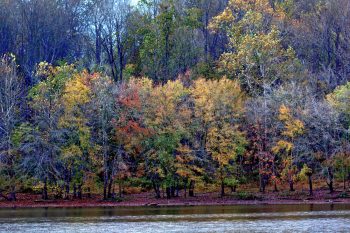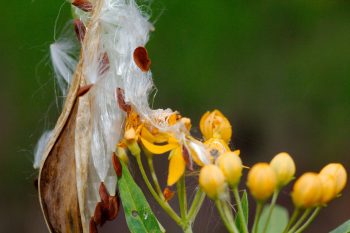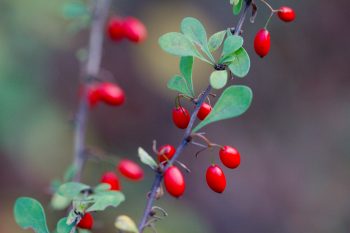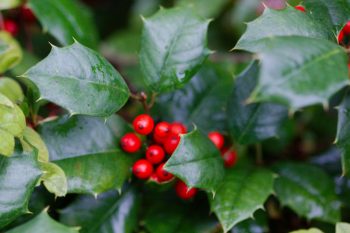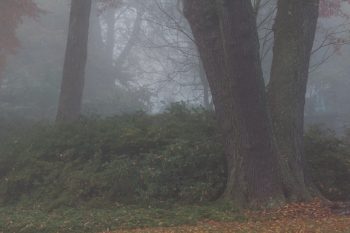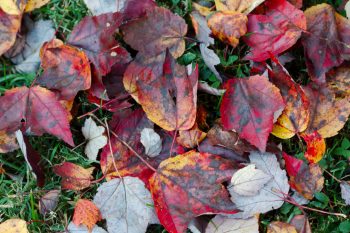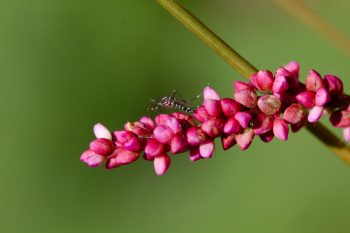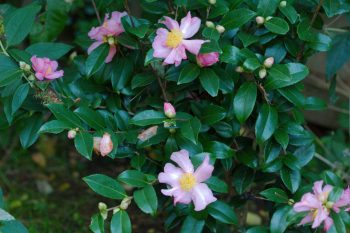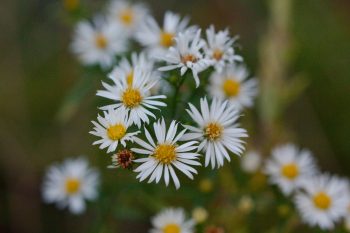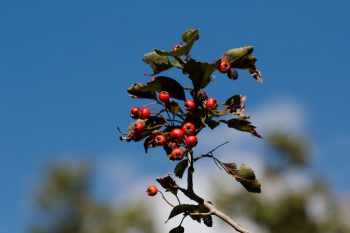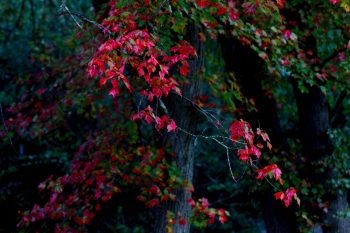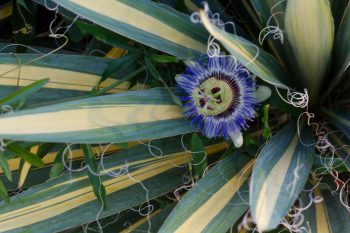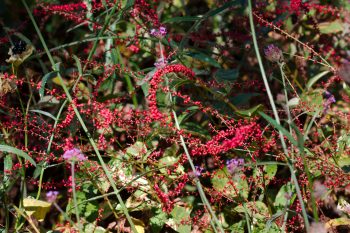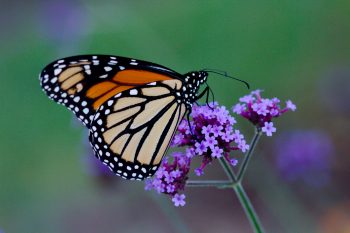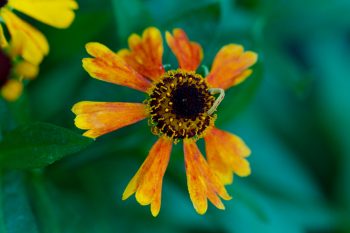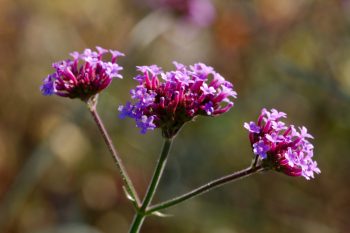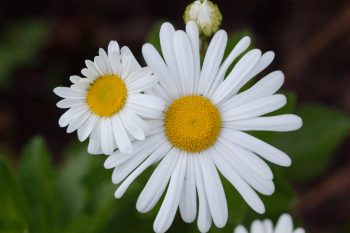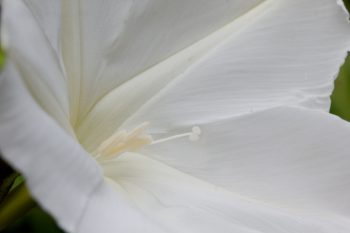Cathy and I took a walk in the neighborhood early this afternoon. I wanted to see the Japanese maples in a yard at the far end of our neighborhood. They generally put on a really good show. While I’m not sure they are quite as good this year as they have been some other years, they’re still worth a look. These are fairly old trees, probably planted about the time the neighborhood was established. This house was built in 1971, so the trees are probably something like 50 years old, which seems about right. They are different, with one having quite dark leaves while the other (shown here) has a very bright red. There are actually a few more trees, one on either end of the house and another in the back yard. Really nice.
Flowers and Plants
Japanese Maples
Trees by Lake Frank
Cathy and I took a walk by Lake Frank this afternoon. With the weather turning cooler and of course with work during almost all the daylight hours, it’s really important to make a point to get outside when we can. On our walk, I took pictures of quite a few fruits on shrubs and vines. There were rose hips, oriental bittersweet, and I think some sort of privet. The water in the lake is a little low, at least by comparison to the last few times we’ve been here, when it was particularly high. The fall color was about at it’s peak or maybe just a little past. Pretty soon, the trees will be mostly bare and winter will be upon us.
Yellow Asclepias
This yellow Asclepias has been blooming pretty must constantly all summer. It’s really quite amazing. Others bloomed for a while and then went to seed, which is what you sort of expect, but this one just keeps putting out new buds, which open into these lovely, pure, yellow flowers. As you can see, it also has seeds. This in on our back patio and it won’t make it through the winter (unless it’s exceptionally mild, of course). It’s only really hardy to USDA Zone 9. But growing it as an annual is really worth it. Highly recommended.
Holly Berries
We have a really nice crop of holly berries on the tree in front of our house this fall. The squirrels are constantly in this tree and the ground underneath it, including the front walk, is constantly littered with pieces of berry and the occasional leaf. The robins also like them and generally, at some point in the winter, we’ll look out and they will be systematically devouring them. There is another holly at the corner of the house and the robins have found that one and were up in it the other day. So far this one has just been the squirrels, though.
Foggy Morning
I really like fog. I mean, I wouldn’t want to live in a place that was always foggy, I suppose, but we have fog rarely enough that it’s a treat. It makes an ordinary morning scene more atmospheric, I think. This is just an old black cherry tree and some azaleas in the yard next door but the fog makes it look more exotic. I remember particularly foggy mornings in Cambridge. We lived near the river so we got them a bit more often than parts of the town and generally there was less fog by the time we got to school, but I remember days when Ralph and I had to make our way to the bus stop with one hand on the fence to stay on the pavement.
Autumn Leaves
Autumn is here and the trees are turning their autumn colors. The leaves are falling and covering the ground with shades of red, yellow, orange, and eventually brown. This is under the red maple (Acer rubrum) in out back yard. Maples are among some of the best large trees for fall color. I need to walk to the other end of the neighborhood where there is a yard with a nice collection of Japanese maples (Acer palmatum). Those are some of the prettiest trees in our neighborhood, handsome throughout the year but especially nice in the fall.
Smartweed and Mosquito
Cathy and I walked to the park today and I took a few pictures. This is a very common weed in our area, called Pennsylvania smartweed (Persicaria pensylvanica). I got a bonus in this photograph, of an Asian tiger mosquito (Aedes albopictus). I’m not really a big fan of either, I’ afraid. Weeds are a common problem in our garden and this one shows up without fail. And I don’t know many fans of mosquitoes of any kind. Nevertheless, they both have a sort of beauty that cannot be denied.
Camellia x ‘Winter’s Star’
I bought this camellia, called ‘Winter’s Star’, from Camellia Forest and planted it along the fence at the north end of our back garden. It’s doing well and is coming into bloom. This is a cross between Camellia oleifera and Camellia hiemalis ‘Showa-no-sakae’ and as you can see, it has single, pink flowers and is a fall bloomer. It’s only three or so feet tall at this point, but it should get large enough to be a really striking fall feature in that part of the yard. I bought and planted two other camellias at the same time. These others are both C. japonica and are called ‘Hokkaido Red’ and ‘April Rose’, both spring bloomers.
Fleabane (Erigeron)
Cathy and I took a short walk in the park this afternoon. It’s been cool and damp and it was very pleasant in the woods. I took a few photos, as usual, but nothing particularly spectacular (also as usual). This is a fleabane (Erigeron) of some sort, and pretty common around here. It’s one of the few things still blooming. There were berries on the Amur honeysuckle (Lonicera maackii) as well as on the ornamental pears. When the Bradford pear was first introduced, it didn’t bear fruit because it had no other variety to pollinate its flowers. Over time, there was either enough variation in the genetic makeup or some trees were sold as Bradford that were not. Now they all bear small, round pears.
Hawthorn Berries
Twice in the last couple weeks I’ve gone out to take pictures of these hawthorn berries only to be distracted by a butterfly on the nearby Verbena. Today there were no butterflies, so today’s berry photo will make it onto the blog. This is a variety green hawthorn, Crataegus viridis ‘Winter King’. The green hawthorn is native to the southeastern United States. Although ‘Winter King’ is a more disease-resistant cultivar it still has issues with rust and some of the berries were ruined by that. I have some fungicide that I use on my two dwarf apple trees and next year I’ll probably spray this tree, as well.
Red Maple
This red maple in our back yard is turning its spectacular scarlet. It was a wet and cool day and I just went outside to take a few pictures from the back steps. This one is a bit dark but it was a dark, dreary day. The red is certainly nice and the color on this tree is considerably better than some. This hasn’t been the most spectacular fall in terms of color. The bulk of the woods are yellow or a slightly orange or reddish brown but that’s normal. There are, of course, some trees that really stand out with brilliant color but it feels like there are fewer this year than normal. But that’s not a scientific measurement, just a gut feeling.
Anemone hupehensis var. japonica ‘Pamina’
We bought this Japanese anemone last year and it was in a pot over the winter. I planted it this spring and for a while it looked like the rabbits were not going to let it grow or bloom. Eventually I put a fence of hardware cloth around it, which they quickly knocked over. Now it’s staked to the ground with tent pegs and isn’t going anywhere. I’m a little bothered by the background in this, where the hardware cloth gives a regular, if out-of-focus pattern. Anyway, the anemone is quite lovely and I’m pretty happy with it. Hopefully it will get well enough established that we can take down the fence.
Blue Passion Flower and Variegated Yucca
The blue passion flower (Passiflora caerulea) in this photo is the same plant that I photographed in June (see Monday, June 15, 2020). The vine is still blooming very nicely and I particularly like the flower in with the straight, sharp, leaves of this variegated yucca (Yucca gloriosa ‘Variegata’), sometimes known as Spanish dagger. It’s an east coast native although from further south, rather than from here. Nevertheless, it’s hardy as far north as USDA Zone 6. This is a few blocks from our house, with the passion flower happily growing on a mailbox with the yucca at its base.
Persicaria virginiana ‘Painter’s Palette’
I don’t really recommend growing painter’s palette (Persicaria virginiana) unless you have a lot of space and want a natural garden. It has a tendency to spread and is a bit of work to control. We have more than we need and most of the year I’m just about ready to pull it up. This is the time of year I don’t mind it quite so much. There isn’t a lot else in bloom and it provides some color in the border with it’s tiny, red flowers on wispy stalks. We have a lot of it mixed with Verbena bonariensis in the large, central bed in our front garden and the two of them together are pretty nice. The foliage is also interesting, with green alternating with a very pale green and with a reddish, V shape stripe.
Monarch Butterfly (Danaus plexippus)
The late afternoon sun was shining on the hawthorn berries and I took some pictures of them before spotting this monarch butterfly (Danaus plexippus) flitting around the tall verbena (Verbena bonariensis). She flew off for a while but I waited and she came back and I was able to get some pretty nice photos. I figured I can get pictures of the hawthorn again tomorrow. The butterflies are getting to be fewer and fewer, so I want to capture them while I can. We’ve had a pretty steady presence of monarchs this summer, although rarely more than one at a time. This one is in particularly fine shape.
Sneezeweed (Helenium ‘Mardi Gras’)
I posted a picture of this sneezeweed (Helenium ‘Mardi Gras’) back in mid-July, when we first planted it. Almost immediately, the stems were bitten off by some animal. It was high enough that we suspected the deer but it could have been rabbits. We have a lot of rabbits. Anyway, there have been no flowers since then until just recently, when one stem was left along long enough to bloom. I may need to put some protection around this next year or at least have some deer repelling stuff near by. It’s really nice when it blooms, but if they’re going to eat it, there’s not a lot we can do.
Verbena bonariensis
The Verbena bonariensis (tall verbena) is really at its peak right now. That, along with the painter’s palete (Persicaria virginiana) are providing most of the color in our front bed. The daisies shown in yesterday’s post are there, as well as a good collection of merigolds, but these two cover the bulk of the area. The butterflies seem to like them and I’ll have a few photos of them there in the next few days. The painter’s palette is a bit weedy and I wouldn’t mind getting rid of a little of that, but the tiny red buds and flowers are nice this time of year, I have to admit.
Daisy
Cathy bought this plant a while back, either from a woman who was selling plants from her garden or from a nursery and it went into the front bed. We used to call it the spruce bed but now it’s the hawthorn bed (because the spruce is gone and there’s a hawthorn there, now). I think this may be a shasta daisy (Leucanthemum x superbum) called ‘Alaska’ but don’t know for sure. It’s a daisy, anyway, and doing very well. It’s a little hidden and we need to do some more work on that bed, but this has been it’s first real year planted out and in general we’re pretty pleased with it.
Ipomoea alba (Moonflower)
Cathy got a pot of seedlings from our friend Janis. The mice got into them and they were therefore all mixed up, so Cathy called it the Mouse Mix. This is one of the plants from that, a moonflower (Ipomoea alba). The related I. batatas is the sweet potato and is also grown as an ornamental, because of its unusually shaped leaves. This, clearly, is grown for the large, white flower. In tropical climates it can grow to 70 feet or more, but here, grown as an annual, it won’t get anywhere near that. This one is tiny, growing in a pot on our driveway. Starting them early and putting them out as soon as the danger of frost is past can give you ten or fifteen feet of growth, though, and is worth trying.


